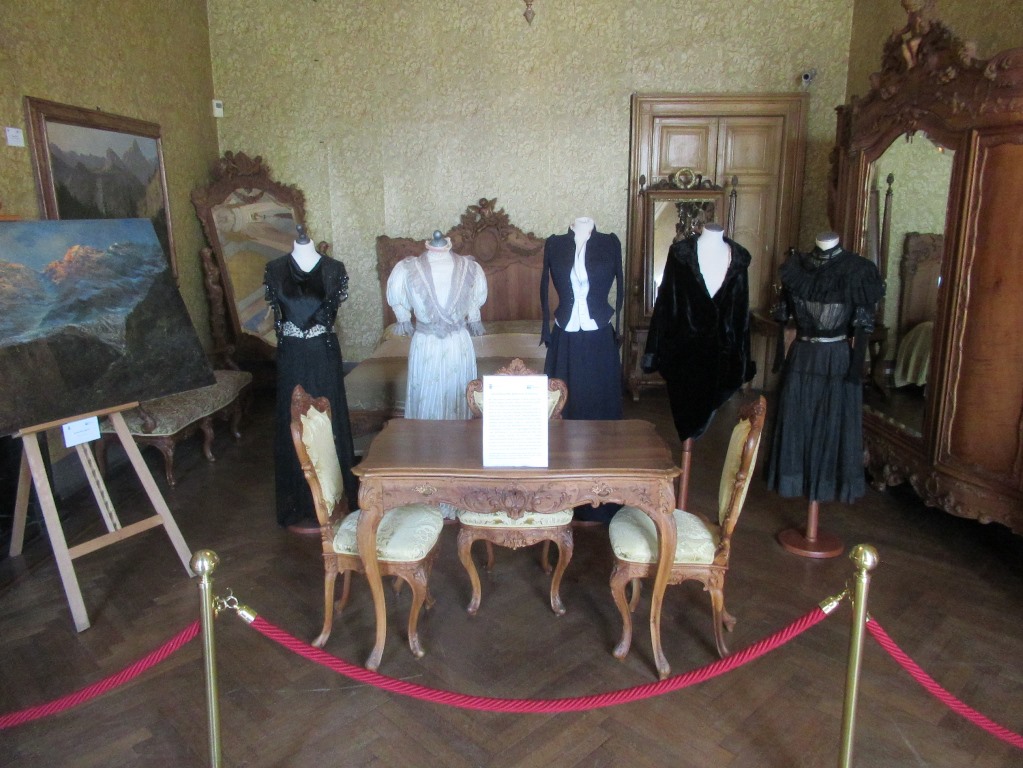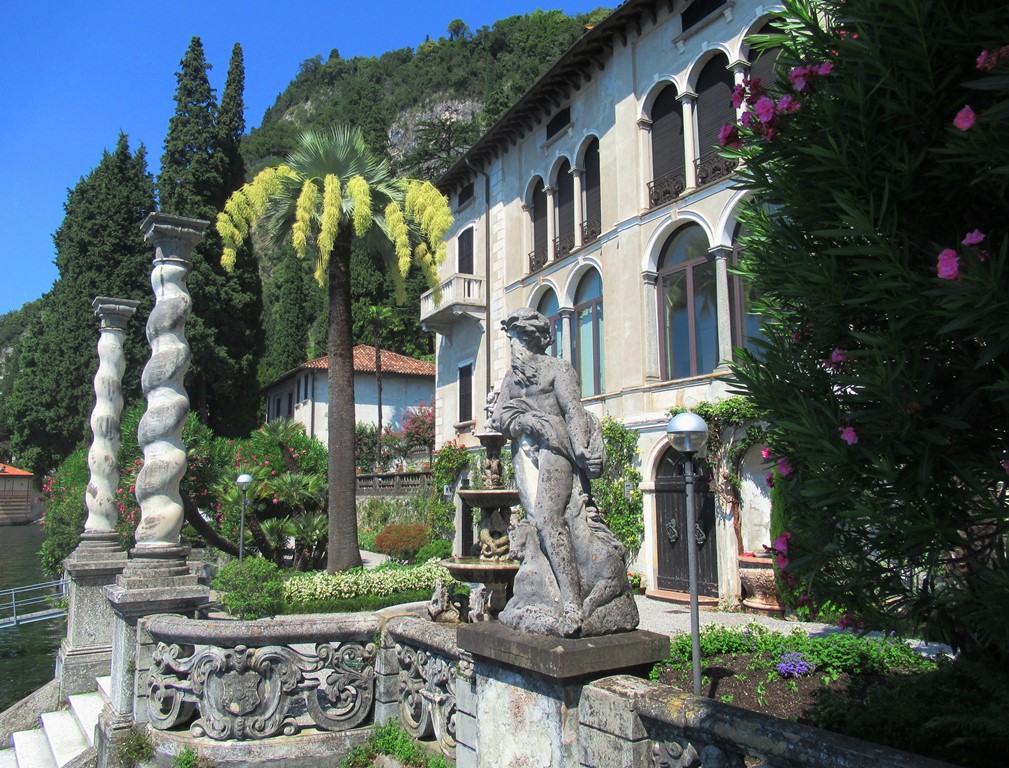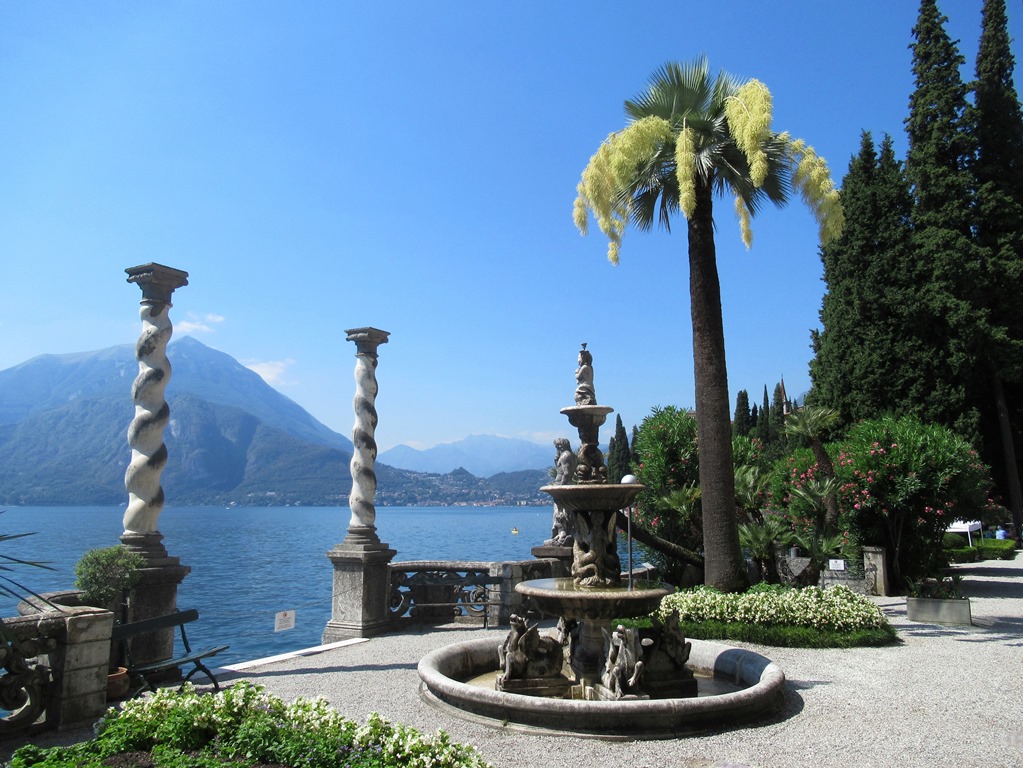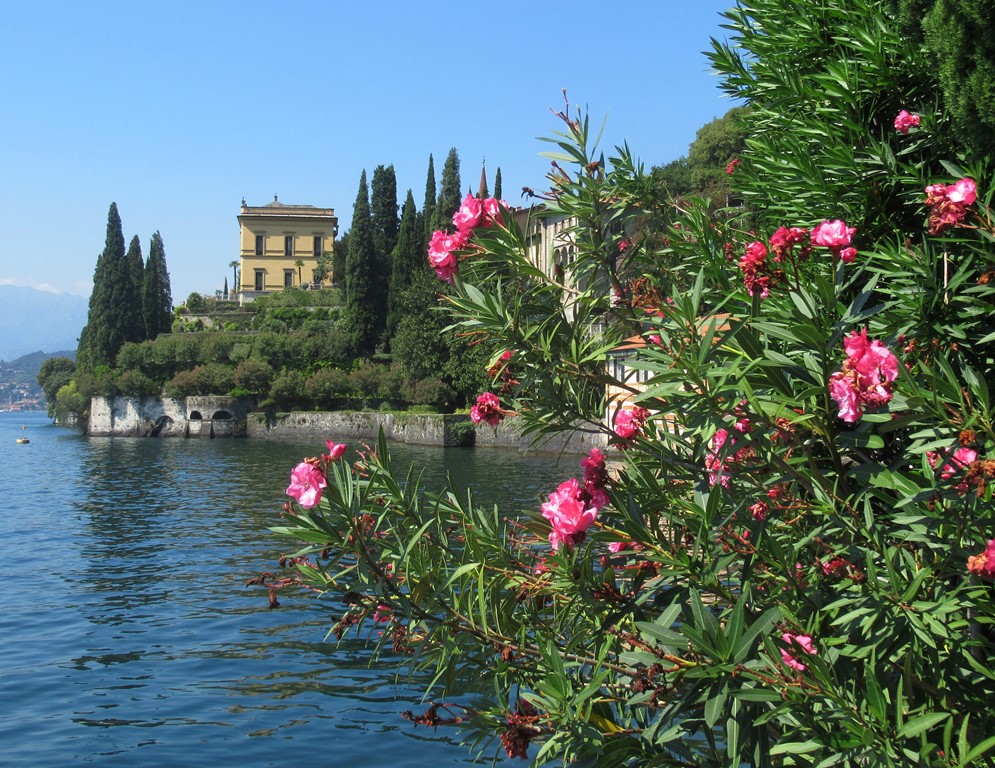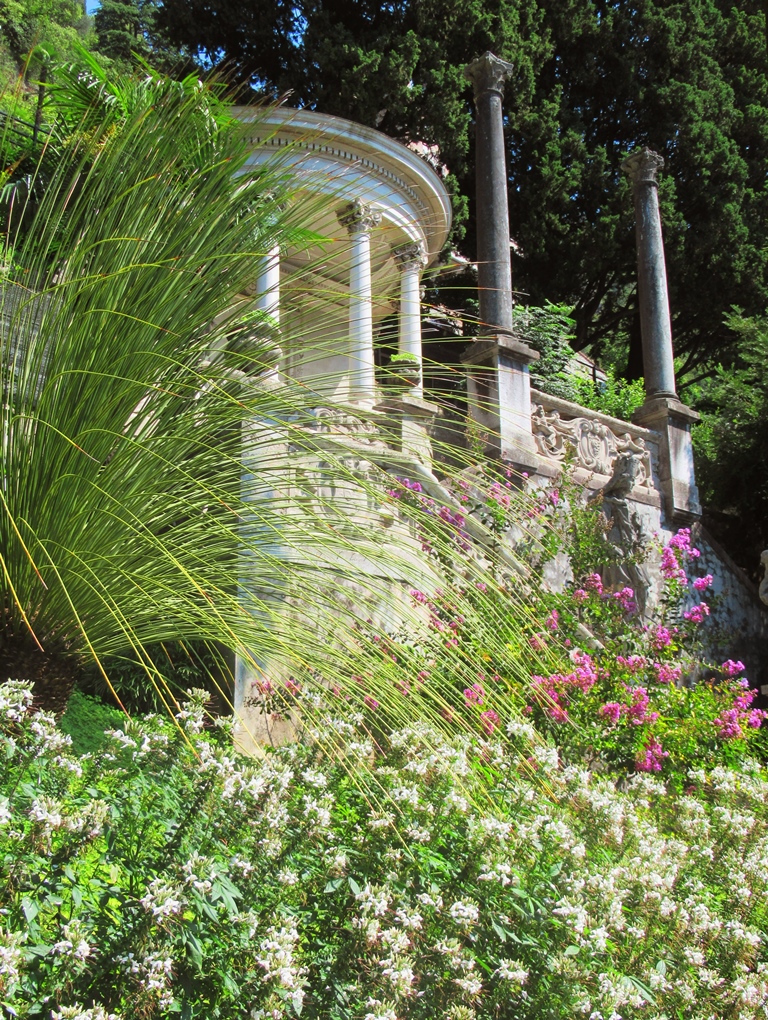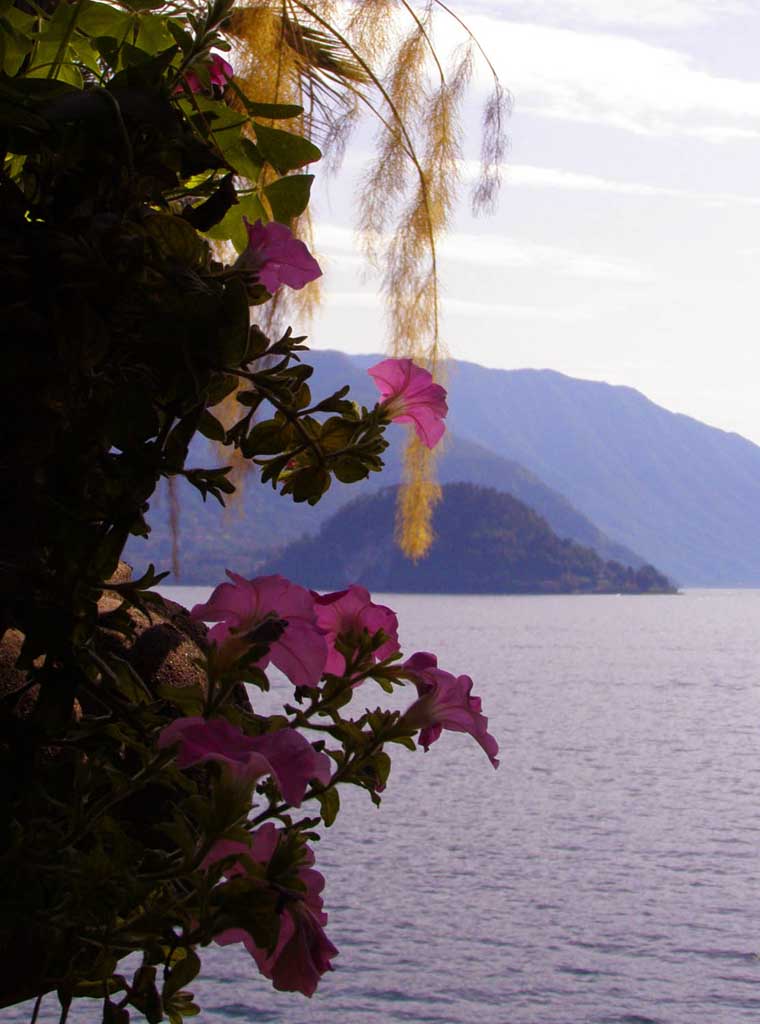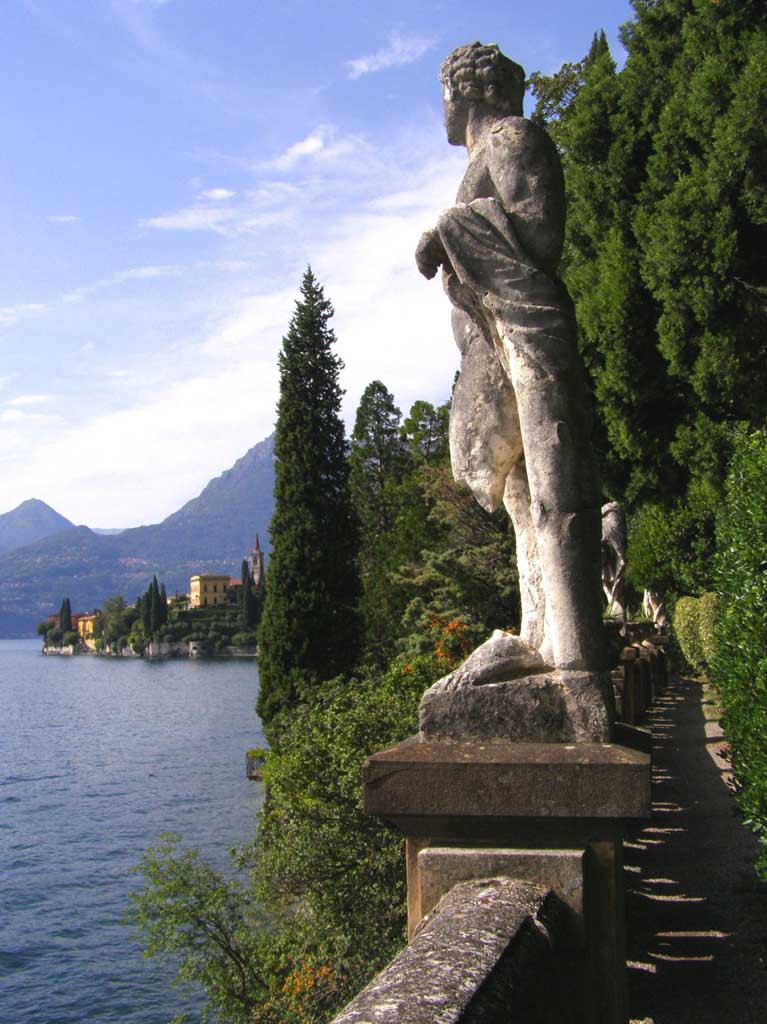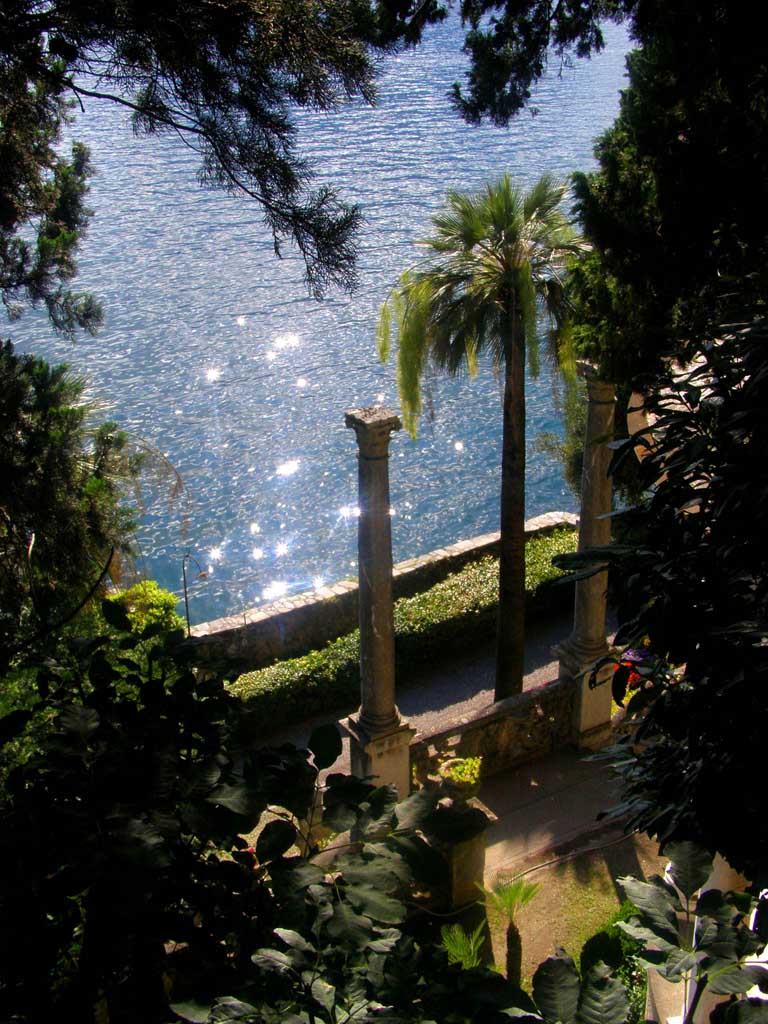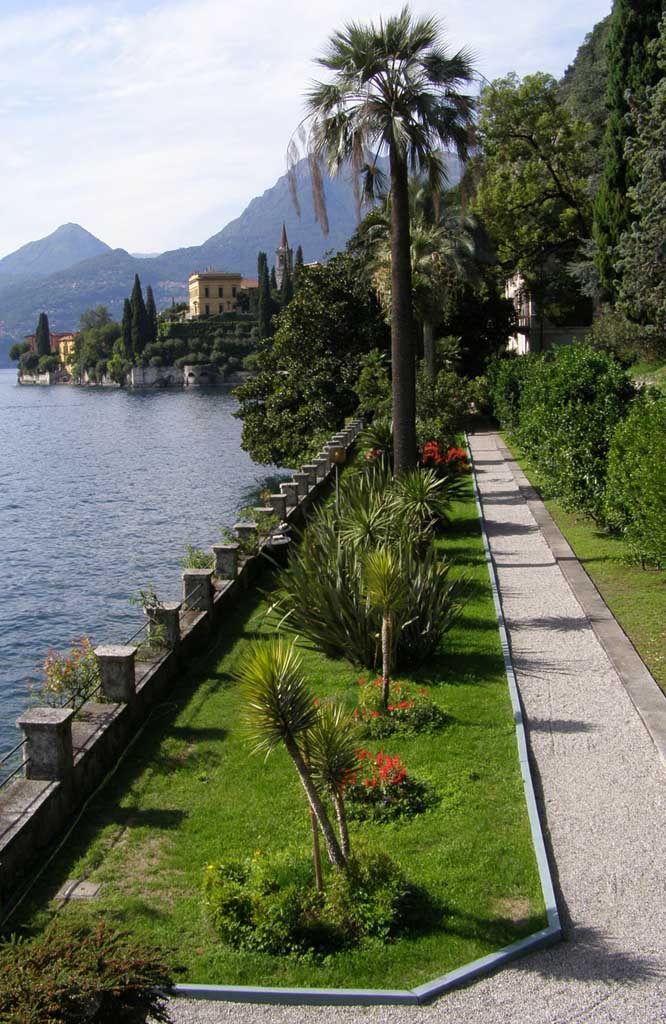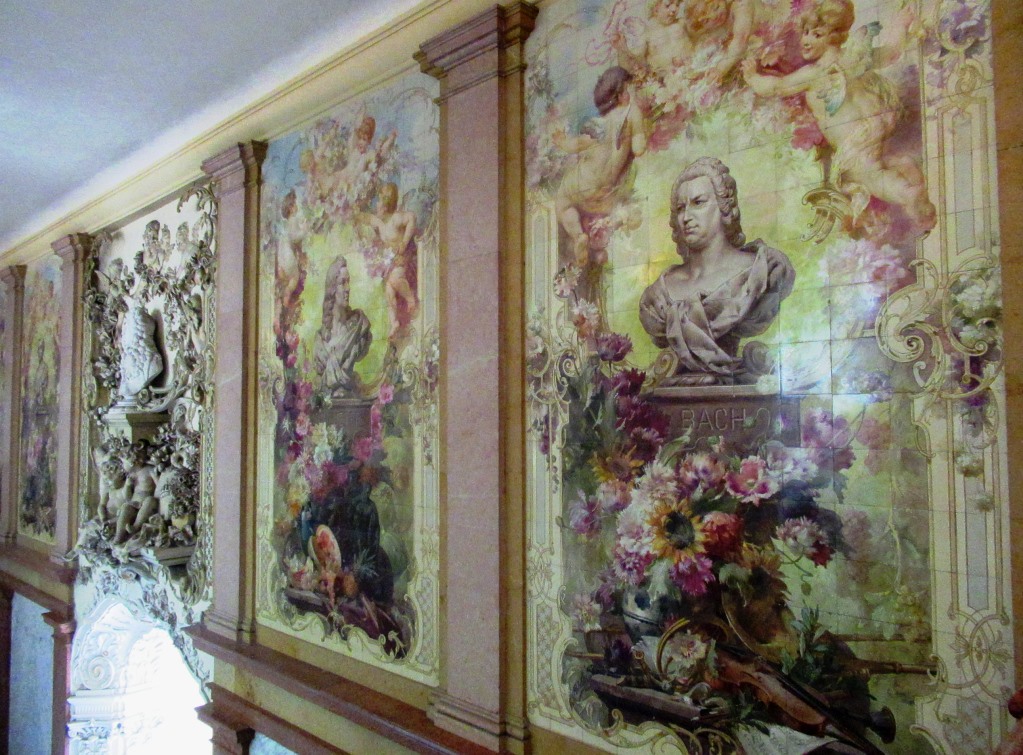
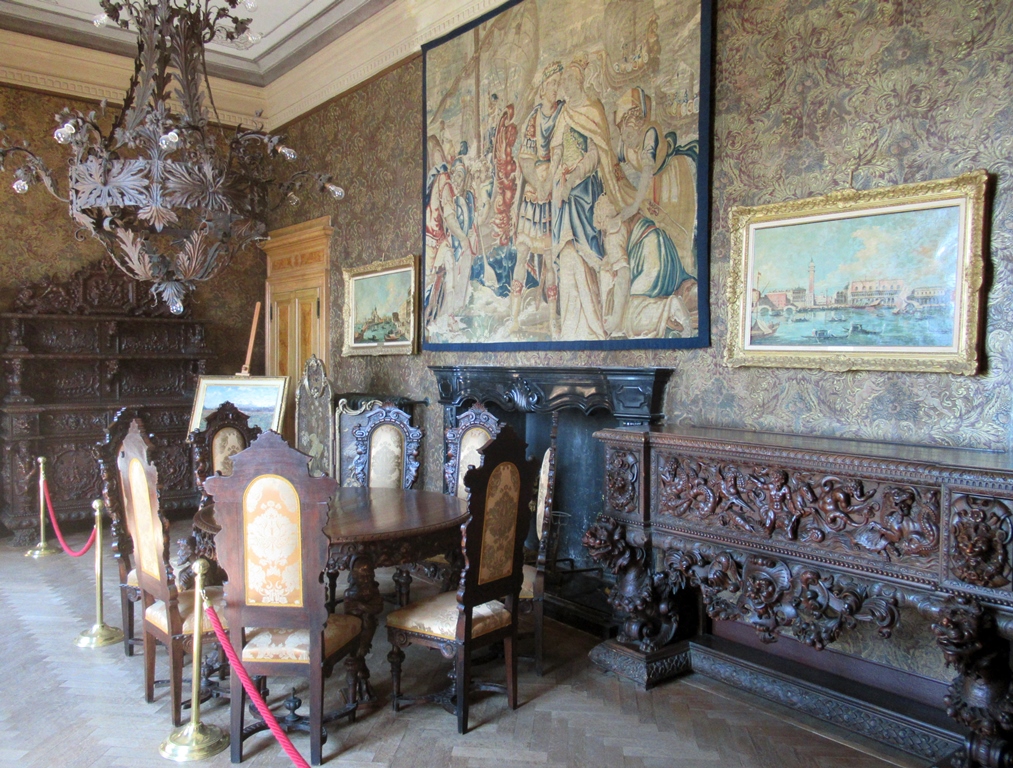
German inlaid furniture in the Black Room.
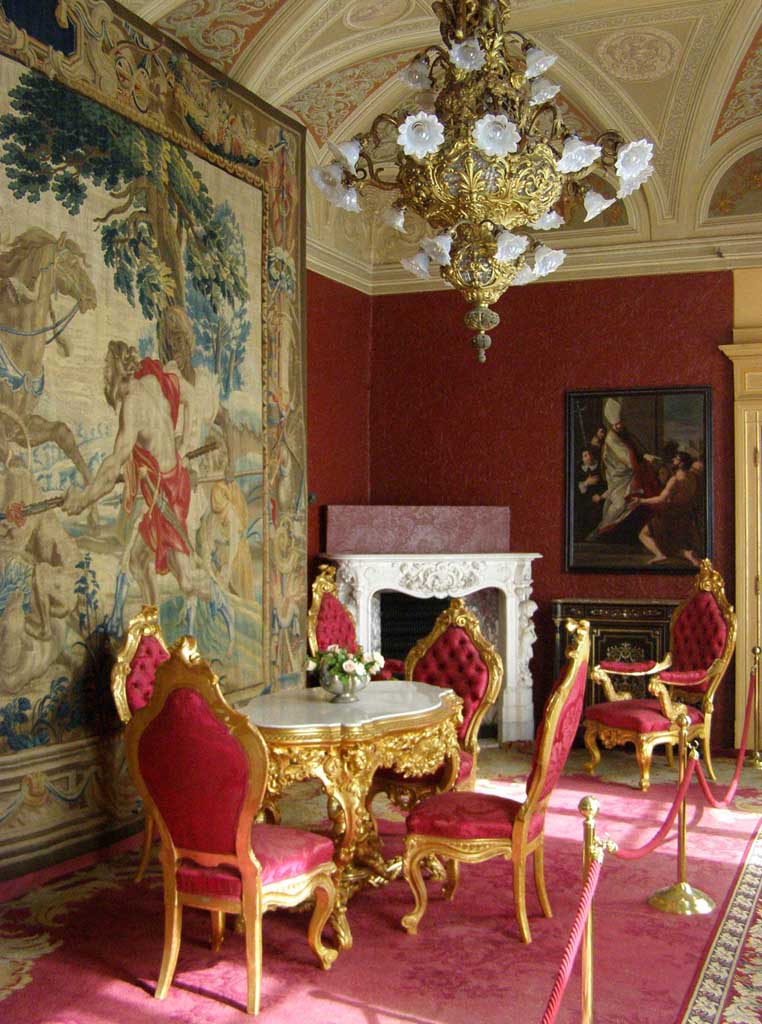
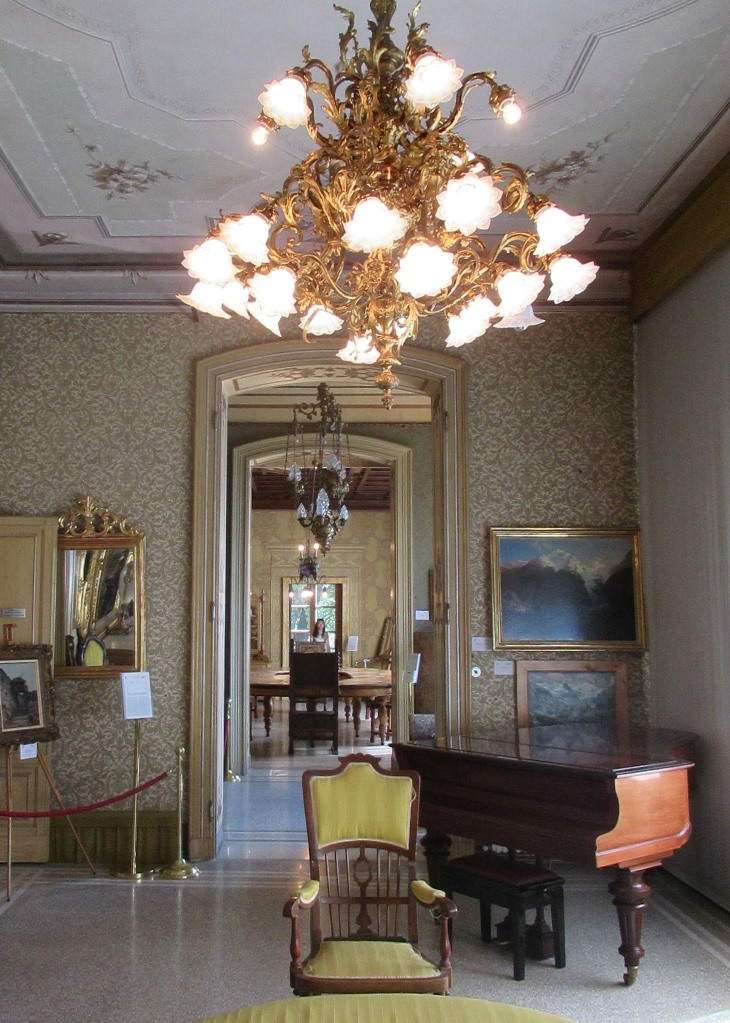
Left: the Red Room.
|
|
Villa Monastero
Varenna
Once upon a time, about eight hundred years ago, there was a little monastery kept by Cistercian nuns. The building dates back presumably to the time of the wars between the communes and the Holy Roman Empire. The monastery is believed to have been founded by a group of faithful followers who had escaped from the Comacina Island, after the churches there had been destroyed and the inhabitants of Varenna sent into exile. Years later, the nuns were transferred to an abbey of Lecco and archbishop Borromeo sold the building to a noble from Valsassina, Paolo Mornico, who took it over in 1569. Over the years, his heirs made several improvements to the monastery, converting it into a magnificent gentleman’s residence with its 17th century façade and symmetrical porticos, while the garden was predominantly destined to agriculture. The German Walter Kees carried out further reconstruction works until achieving the final design, which is still as we see it today. He also laicized the little church and created the splendid tropical garden (1904). The apparent inconsistency between architectural styles is mitigated by the overall design, which unites artistic and architectural elements drawn from diverse motifs ranging from neoclassical (the tempietto), baroque (the balustrade), eclectical (the porter’s lodge) and exotic (the tortile columns). At the end of World War I, the villa was seized and confiscated as enemy’s property and conceded to the National Institute for War Veterans. Later on it became an institute for hydrology studies (inaugurated by Bottai in 1940). At present the Villa is seat of the C.N.R. (National Council of Research) where high culture conferences are held. Physicist Enrico Fermi held his last lecture in public here in 1955. |
